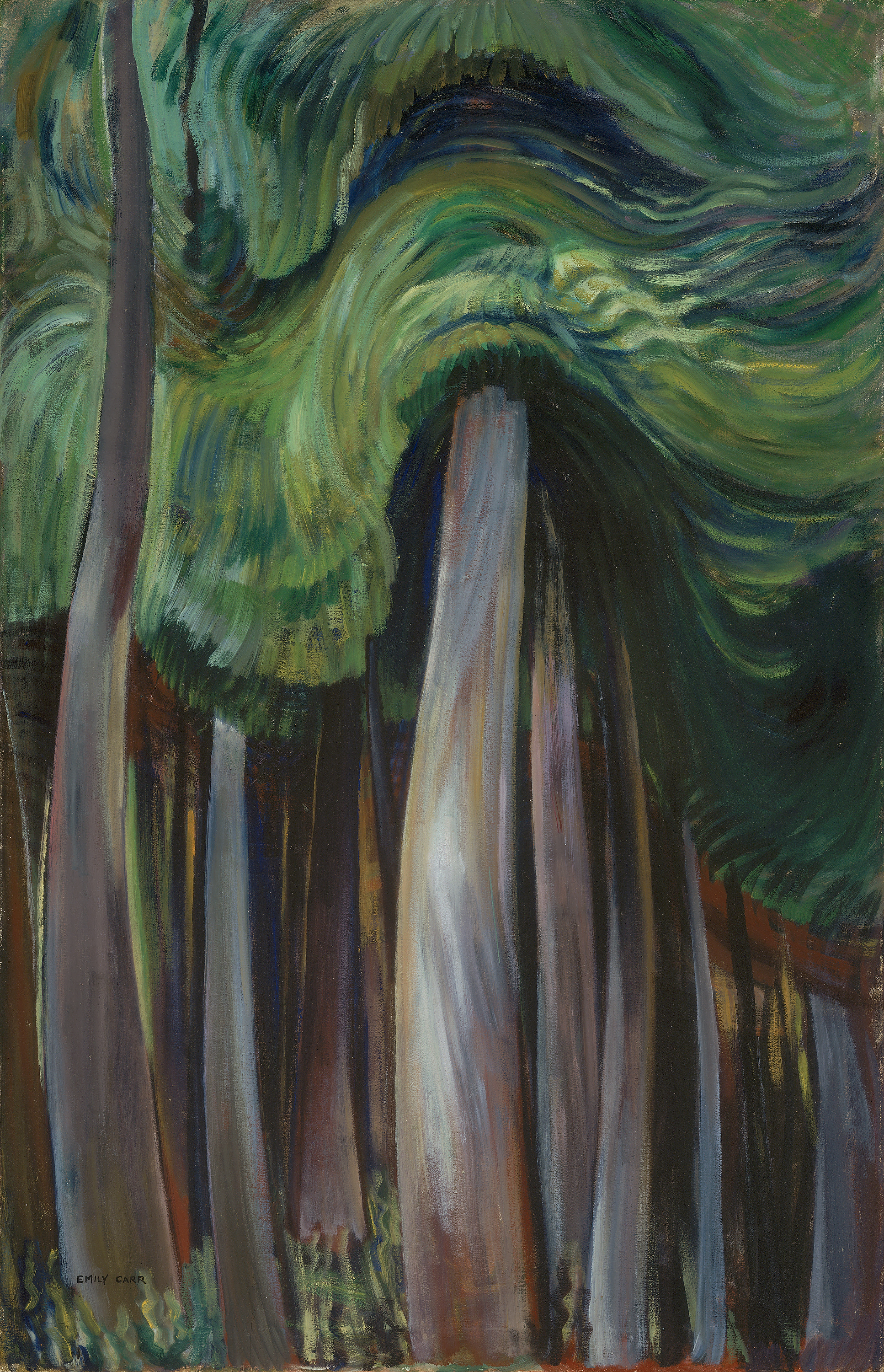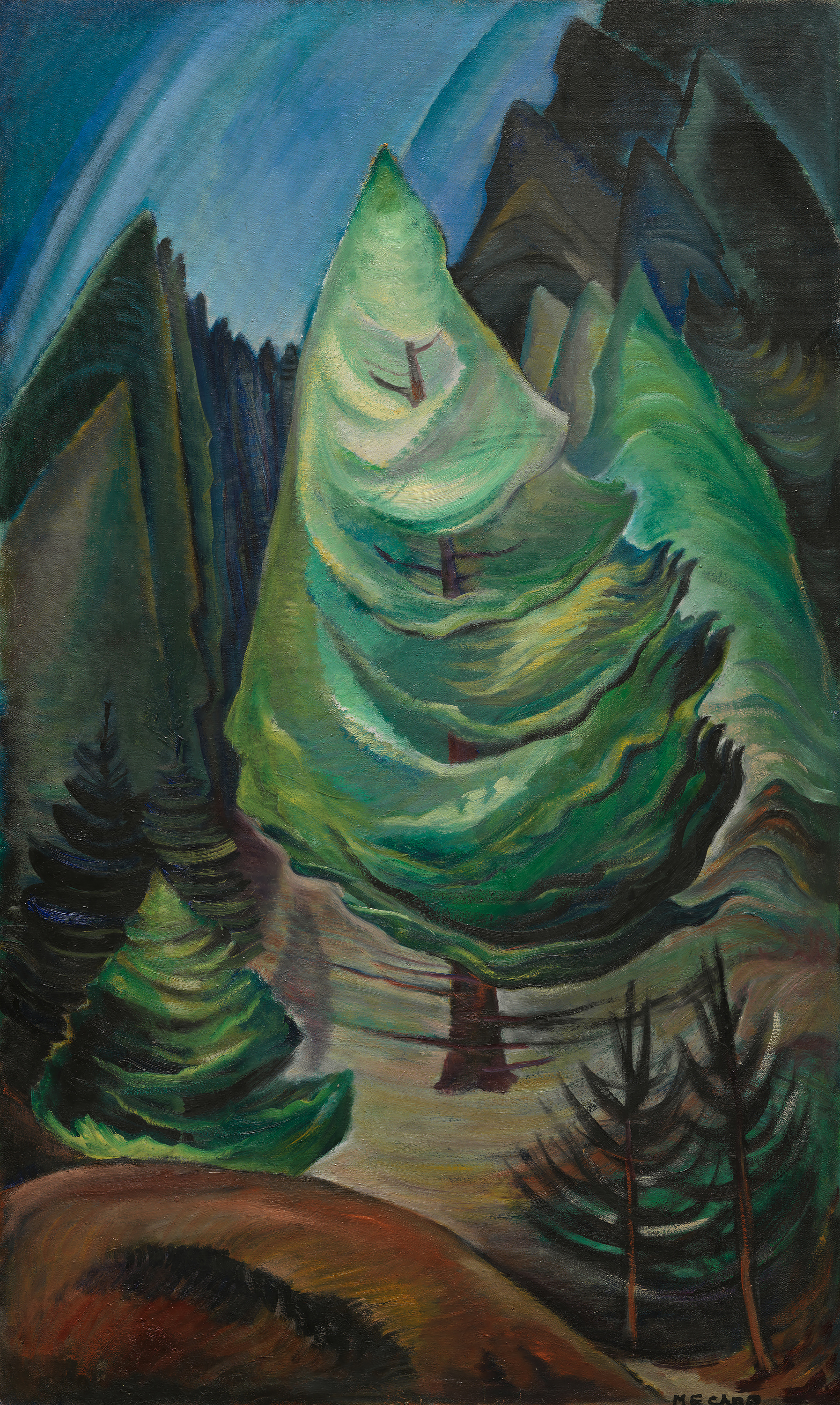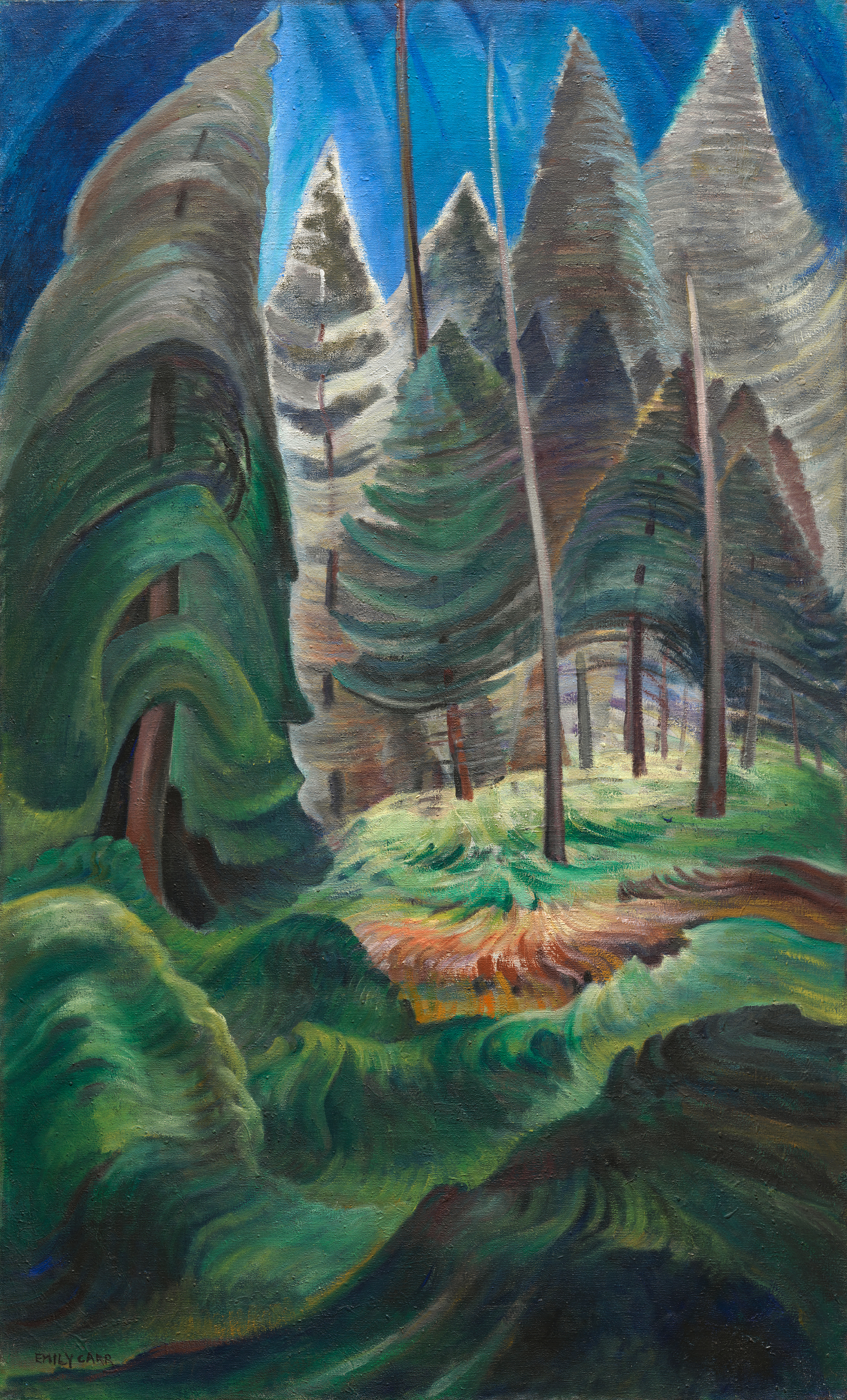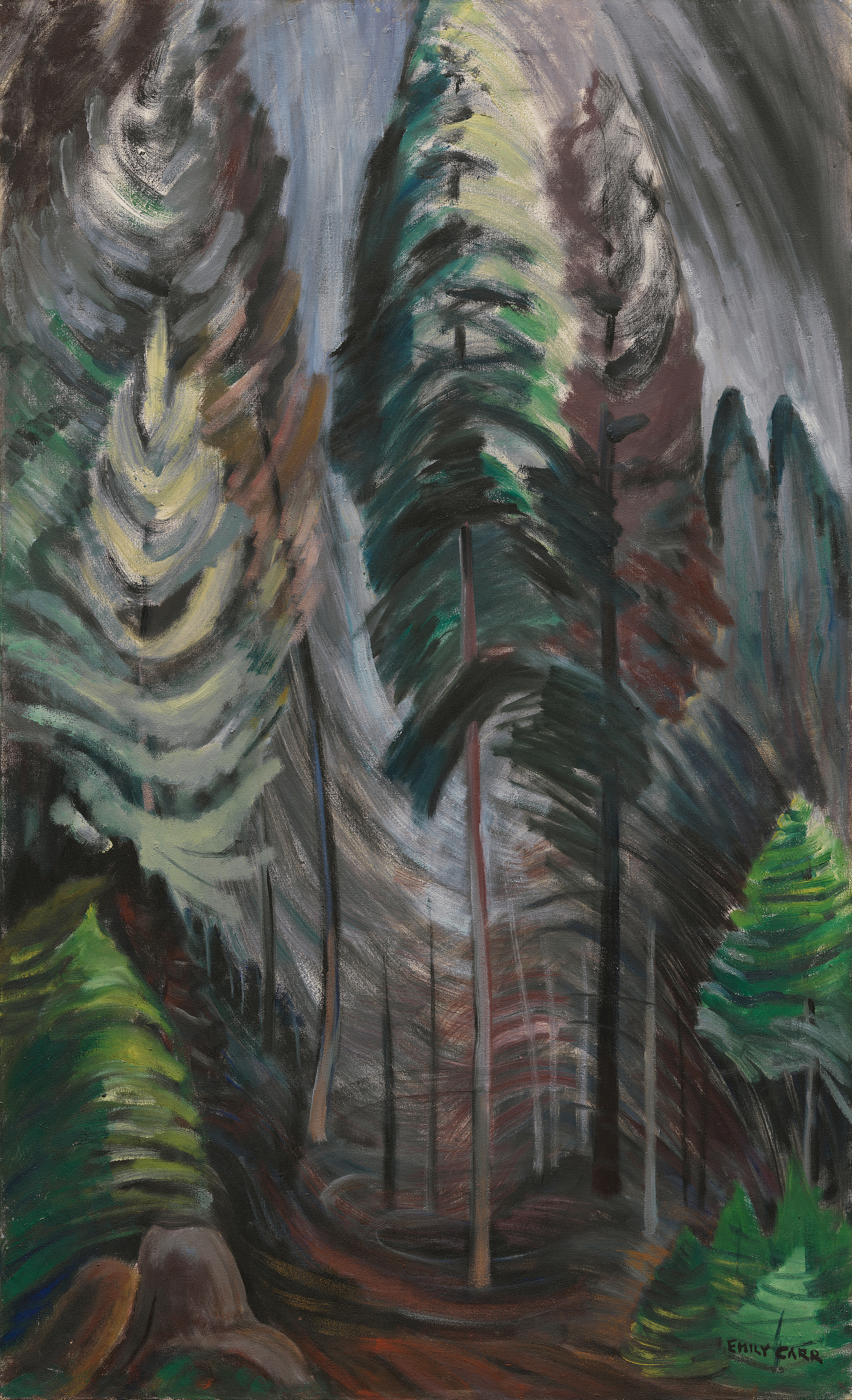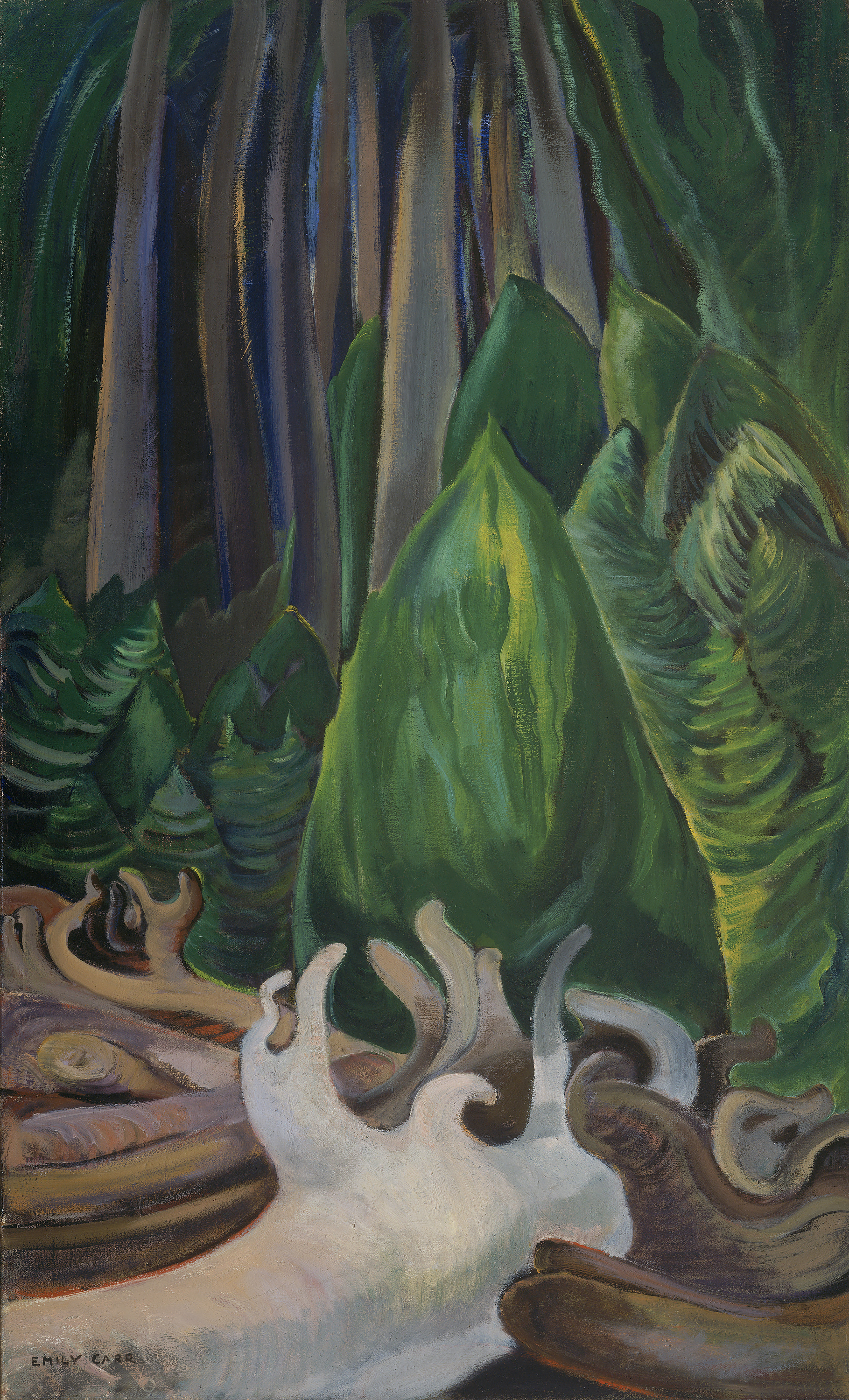Emily Carr’s forest paintings on canvas don’t share the same sense of translucency and fluidity that she achieved in the charcoal and oil on paper paintings seen elsewhere in this exhibition. Carr’s paintings on canvas offer, as one might expect, a studied representation of the Vitalist presence of the forest, land and sky. These paintings—large, cumbersome and demanding—were produced in the studio and based on the sketches done earlier in the forest.
The intense fluidity of gasoline-thinned paint and translucent symbiosis of paint and paper, in the sketches, were replaced by studied compositions, rhythmic brushstrokes and abstracted shapes when transferred to canvas. The paintings on canvas offer remarkable images of the forest that suggest the embodiment of a spiritual presence there. But it is, nonetheless, an abstract language that sheds the material world in favour of transcendence. Emily Carr clearly valued both aspects of her art—the material and the transcendent—as each offered a different insight into the forest and both reflected her intense desire to find herself at home in that place.
